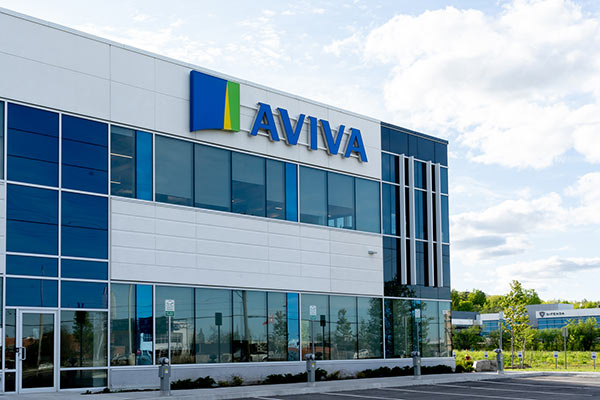Aviva going from strength to strength with profit rise and dividend hike
The acquisition of Direct Line has helped further cement the firm’s leading positions in the home and car insurance markets, and the FTSE 100 company has delivered an impressive first-half performance, says head of markets Richard Hunter.
14th August 2025 08:26
by Richard Hunter from interactive investor

Aviva’s growth strategy is going from strength to strength, with its move towards a more capital-light business - driven in part by selective bolt-on acquisitions – lighting a fire under future prospects.
- Invest with ii: Open an ISA | ISA Investment Ideas | Transfer a Stocks & Shares ISA
Its purchases last year of AIG Life UK, which boosted its protection presence, and Probitas, which provided exposure to the Lloyd’s of London market and an estimated addressable market of £200 billion of distribution opportunities, were important and timely moves. This was then trumped by the announcement of the Direct Line acquisition in December, since cleared by the Competition & Markets Authority (CMA) in July, which was well received and with good reason.
Perhaps most importantly, it will further cement Aviva (LSE:AV.)’s leading positions particularly in the home and car insurance markets and will result in Aviva having 21 million UK customers. While car insurance has seen a substantial increase in premiums to the exasperation of many consumers, the space has been affected by both higher average new car prices (equating to higher insured valuations) as well as the costly nature of repairing increasingly complex and technologically advanced vehicles.
- Fund managers stay bullish despite tariff and AI fears
- Sign up to our free newsletter for investment ideas, latest news and award-winning analysis
Meanwhile, the group as it currently stands has seen growth virtually across the board in the early part of the year, with overall operating profit spiking by 22% to £1.068 billion, comfortably ahead of the £972 million expected. Its General Insurance Premiums, the area in which Direct Line will sit, rose by 7% to £6.29 billion, underpinned by growth of 9& and 4% in the UK & Ireland and Canada respectively. Wealth net flows increased by 16% to £5.8 billion, while Health premiums, a clear area of prospective growth, jumped by 14% to reach £1 billion. Its solvency coverage ratio stands at an extremely healthy 206% and while the costly cash requirements of the Direct Line deal will prevent any share buybacks this year, the dividend was increased by 10%, leading to a projected yield of 5.6%, more than adequate compensation for shareholders in the interim.
Aviva is continually looking to strengthen its suite of products while also edging towards a more capital-light framework, where it estimates that more than 70% of profit will fall under this description on completion of the Direct Line deal, improving on the 66% level already in place. In the meantime, its leading position in growing markets, diversity by product and geography and financial strength have all been recognised in its share price appreciation of late. Indeed, there may be scope for a further rerating should the group complete the switch from being regarded as a general insurer rather than a pure life insurer, which tends to carry higher price valuations.
- FTSE 100 insurer slides despite profit beat
- Watch our video: why UK shares can keep rising despite weak economy
The share price growth has led to a valuation which is now well above the historic level, although for the moment this multiple is justified. Exposure to general insurance can mean calculating risks to unknown events such as the recent wildfires in Canada, while previous non-core disposals have reduced some of its geographical diversity. Retirement sales were marginally lower in the period reflecting subdued bulk annuity purchase activity, while heightened competition and any integration risks associated with the recent and proposed acquisitions are also on the radar.
However, these headwinds do not detract from an impressive overall performance and the outlook is equally upbeat. The group is still targeting £2 billion of operating profit by next year, driven by not only geographical diversity, but also presence in the increasingly popular lines of private health and life insurance, while the group’s reach continues to provide exposure to most insurance outcomes.
The obvious attractions of a group, which continues to play to its strengths, has resulted in the share price having risen by 35% over the last year, as compared to a gain of 10.7% for the wider FTSE 100 and by 71% over the last two years. Nor has appetite for the group and its prospects diminished. Aviva’s progress and focus on margin over volumes in key areas leads to a market consensus of the shares as a comfortable buy, continuing to underline its leading credentials in the sector.
These articles are provided for information purposes only. Occasionally, an opinion about whether to buy or sell a specific investment may be provided by third parties. The content is not intended to be a personal recommendation to buy or sell any financial instrument or product, or to adopt any investment strategy as it is not provided based on an assessment of your investing knowledge and experience, your financial situation or your investment objectives. The value of your investments, and the income derived from them, may go down as well as up. You may not get back all the money that you invest. The investments referred to in this article may not be suitable for all investors, and if in doubt, an investor should seek advice from a qualified investment adviser.
Full performance can be found on the company or index summary page on the interactive investor website. Simply click on the company's or index name highlighted in the article.